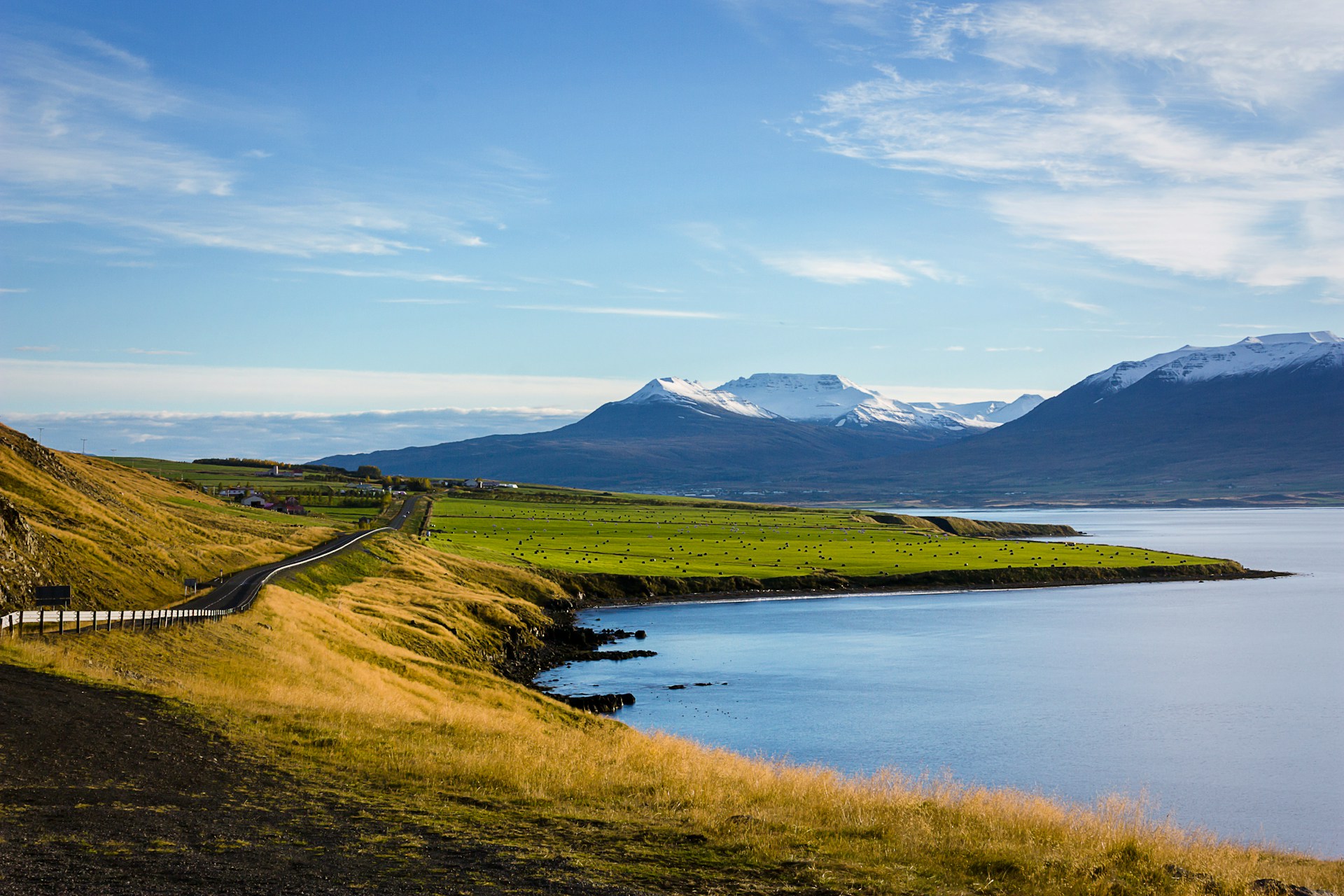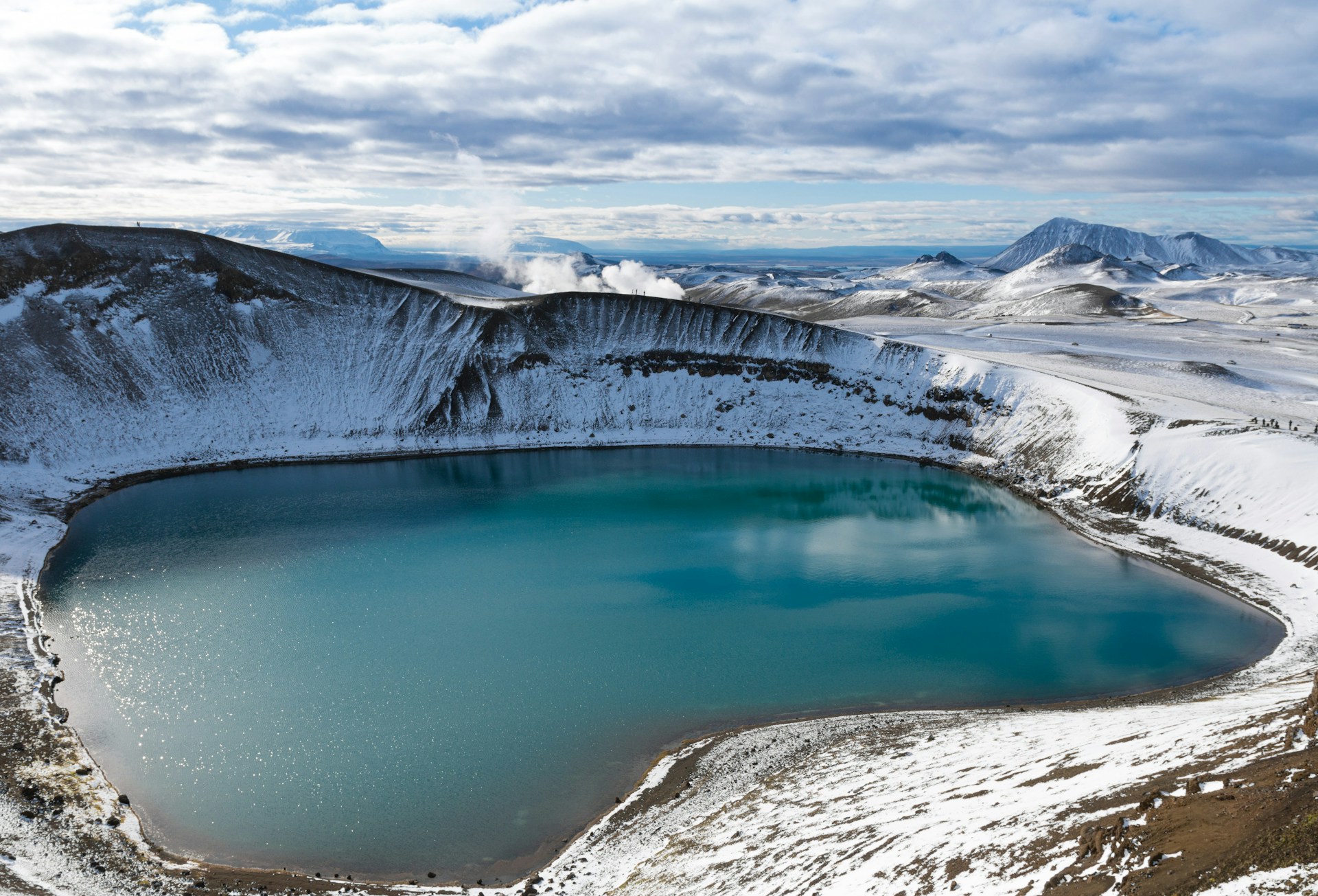Kerid Crater, located in the Icelandic countryside, is a natural wonder that should be on every nature lover's bucket list. As part of the Golden Circle route, the crater is easily accessible with guided tours like Golden Circle Day Tours. The vivid contrast of the red volcanic rocks and the turquoise blue waters of the crater lake make for stunning photo opportunities, not to mention the panoramic views of the crater and surrounding area landscapes that are simply breathtaking. This guide is the perfect tool to explore the crater and learn about its formation, history, and the legends that surround it. So, put on some comfortable shoes and get ready to immerse yourself in the wonders of nature at Kerid Crater.
About Kerið Volcano
The Kerid Crater is a natural wonder situated in Iceland's Golden Circle. It was formed over 3,000 years ago due to volcanic activity. This beautiful crater lake is 170 meters wide and 55 meters deep, and has mineral-rich waters that change colors during the day. The stunning contrast between the red and black volcanic rocks and greenery in the surrounding area of the crater makes it even more breathtaking. People from all over the world come to witness this marvel of nature.

Visiting Iceland's crater is a must for any traveler because walking around the rim or descending to the bottom provides a one-of-a-kind view of the country's stunning natural scenery.
The Vibrant Blue Gem
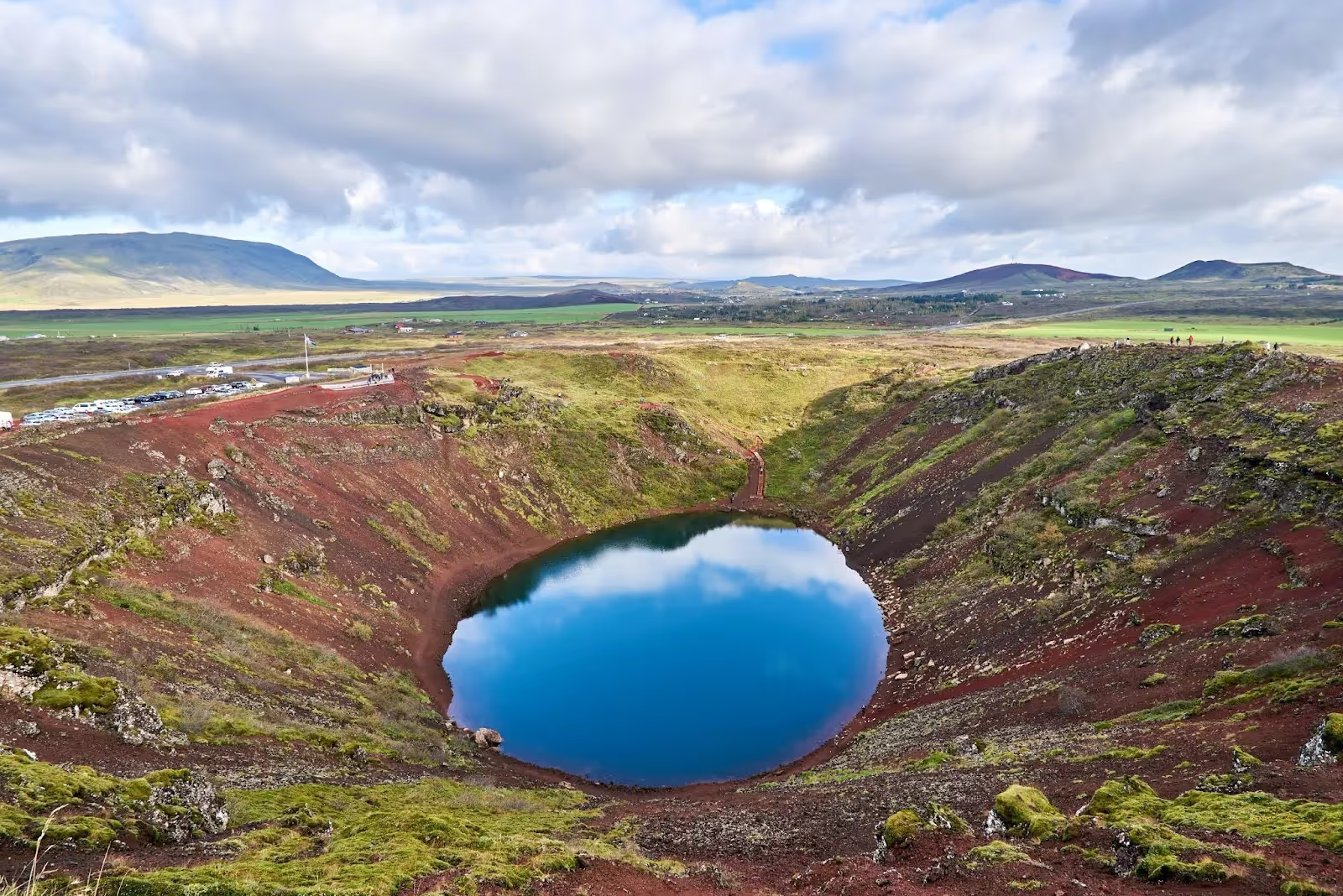
One of the most visually stunning geological wonders in Iceland is Kerið, a volcanic crater lake situated in the Grímsnes, area of south Iceland. This vibrant blue gem is part of the Western Volcanic Zone, which includes the Reykjanes peninsula and the Langjökull Glacier. Kerið is only 6,500 years old and is among the top three most famous volcanic craters in Iceland. The caldera is around 55 meters deep, 170 meters wide, and 270 meters across, consisting of a unique red volcanic rock.
Natural Wonder
At Kerið, hikers can descend one of the sloping walls covered in deep green moss and enjoy the breathtaking aquamarine lake at the bottom. Although the lake is not deep, its bright color is a result of the minerals present in the soil.
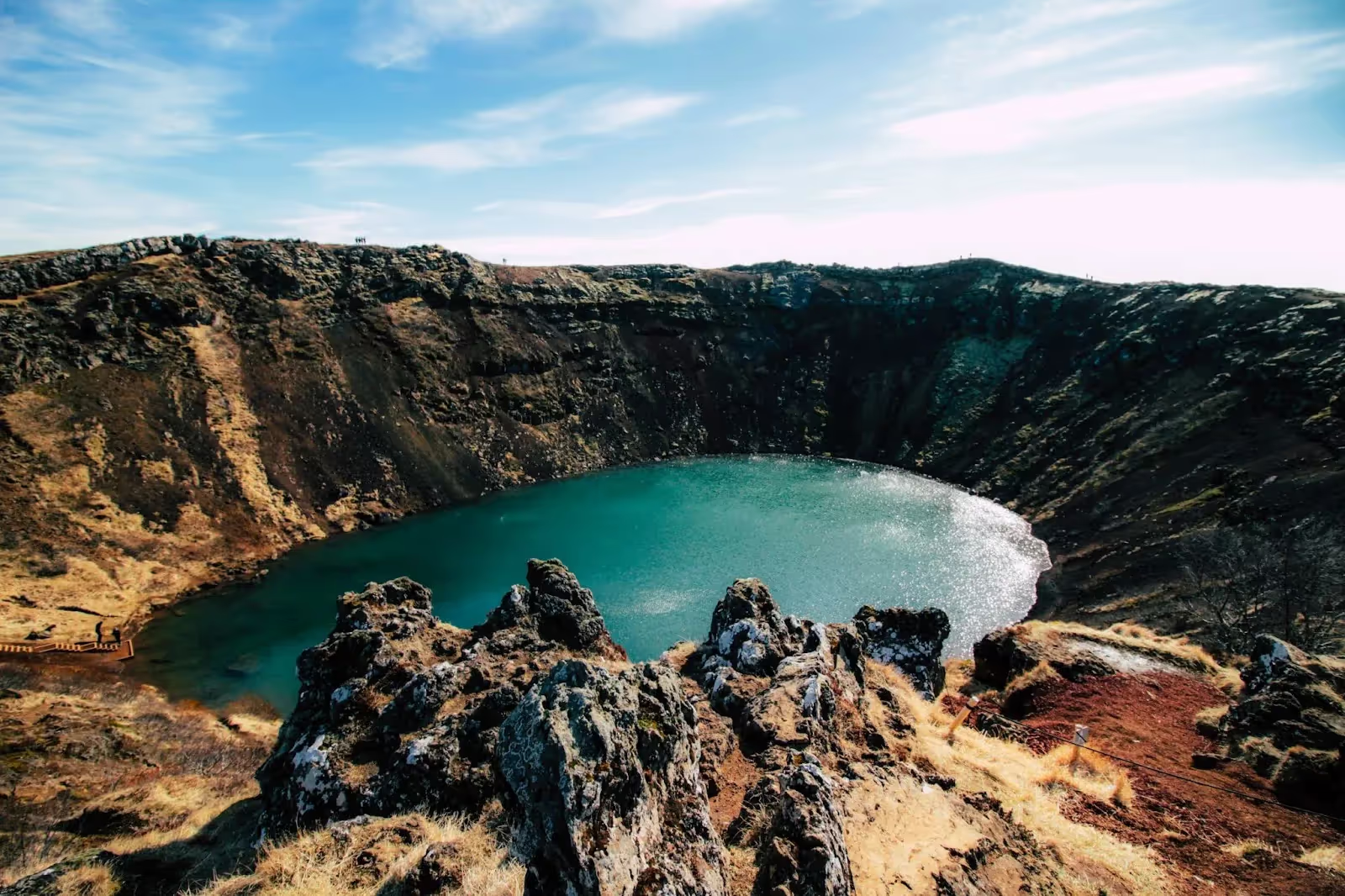
Many people think that Kerið was formed by a volcanic explosion, but in reality, it was created by a cone volcano that erupted and emptied its magma supply. The cone eventually collapsed under its own weight into the empty magma chamber, forming the crater that we see today. The water found at the bottom of the crater is not due to rainfall, but rather sits at the same level as the surrounding water table.
You can visit Kerid crater lake, a volcanic lake that is 3,000 years old, in South Iceland along the Golden Circle route. The depth of the lake ranges from 7 to 14 meters depending on rainfall and other conditions. The water is an uncommon and stunningly bright blue-green color. You can take a simple hike around the crater and enjoy the sun and the breathtaking scenery!
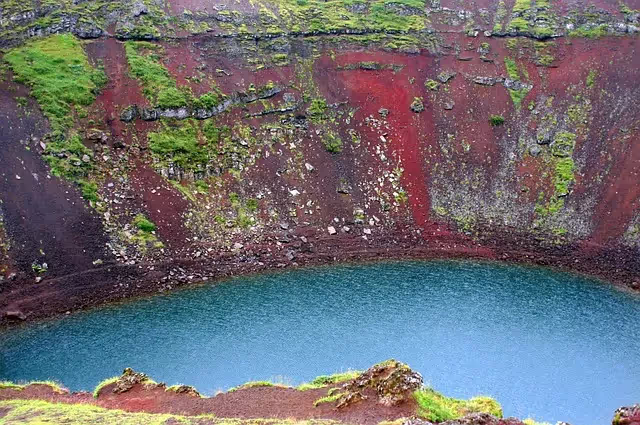
Kerið is known for its unique red volcanic rock slopes and is a crater lake that is 170 meters wide, 270 meters in circumference, and 55 meters deep. Compared to other crater lakes in the region, Kerið is particularly famous for having one of the most intact calderas.
One interesting feature of this crater is its age - it's only about 3000 years old, which makes it around half the age of the other geological features nearby. You can take a simple hike and walk around on the rim of the crater to get up close to it or you can use the ladder to descend to the lake.
Please note that there is a small fee for visiting the Kerið crater and walking to the crater lake during your self-drive tour. The fee has been recently implemented to support the landowners in preserving and protecting the crater, as well as maintaining the parking lot.
Where Is Kerið?
Kerið, situated in the Grímsnes area in south part of South Iceland, is one of the volcanic hills known as 'Tjarnarhólar'. It belongs to the Western Volcanic Zone of Iceland, which also includes the Reykjanes peninsula and the Langjokull glacier.
GPS coordinates of Kerið: 64.0413° N, 20.8851° W
HOW DO I GET TO KERIÐ?
Kerid is conveniently located right off the ring road and can be reached within a 40-minute drive from both Thingvellir National Park and Haukadalur.
Kerið can be easily located on the main road connecting the golden circle to Selfoss. It is only 15 km north of Selfoss, right off highway 35. If you take route 427, the distance between Kerið and the Blue Lagoon is 105 km.
Even if you only want to take a break and a nice walk and stretch your legs, it's worth stopping at this place if you're driving the Golden Circle.
If you're renting a car, there's a car park right next to the crater for your convenience.
ORIGIN OF KERIÐ

Scientists have debated about the origin of Kerið, but it's difficult to determine due to the crater being formed around 6,500 years ago. Previously, several crater lakes Kerið was categorized by volcanologists as an "explosion crater" because they believed it was created during an explosive eruption.
Most scientists now think that Kerið was originally a cone-shaped volcano that erupted and emptied its magma chamber. This caused the foundation to collapse inward and create the shape we see today.
It is believed that Kerið crater filled with water at some point in the centuries after its collapse. The water in the crater lake is thought to be groundwater, rather than from rainfall, as it sits at the same level as the water table, which is the underground surface where soil or rock is always saturated with water.
The depth of the lake in Kerið varies between seven and fourteen meters depending on the water table, which is influenced by seasonal changes and rainfall. Since the water doesn't drain out, the crater acts as a spectacular view into the groundwater system.
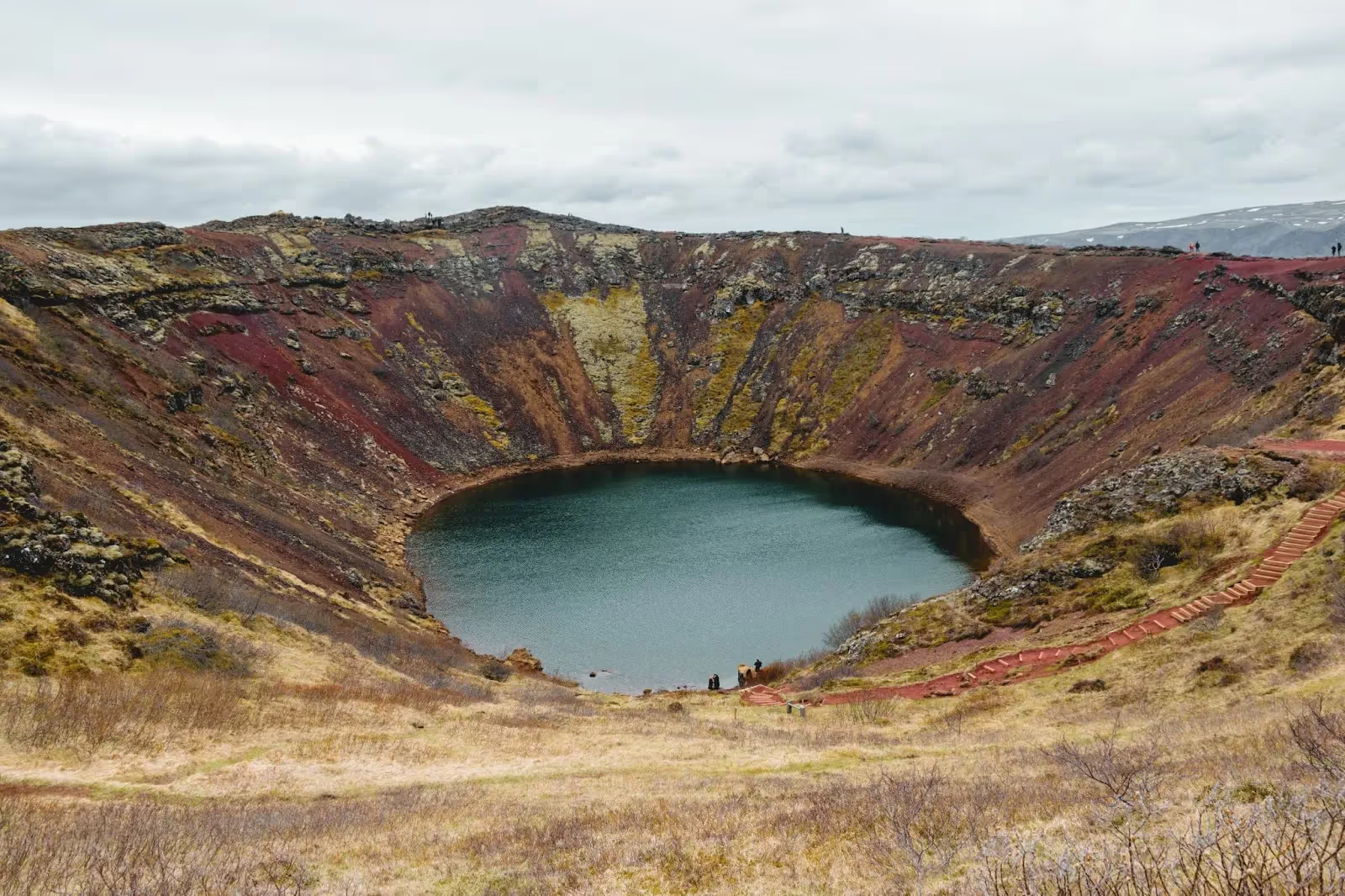
ACCOMMODATION AND HOTELS NEAR KERIÐ
Kerid is a popular tourist destination, and within a 2-mile radius, there are plenty of hotels and guest houses to choose from.
Hotels
- Hotel Selfoss
- Hotel Ork
- Arctic Nature Hotel
- Hotel Eldhester
Hostel
- Selfoss Hostel
- AU44 Hostel
- Ljósafossskóli Hostel
- Selfoss HI Hostel
Apartments and Guesthouses
- Annalyn Guesthouse
- Bella Apartments & Rooms
- Gesthus Selfoss
- Guesthouse Bjarney
KERIÐ IN WINTER
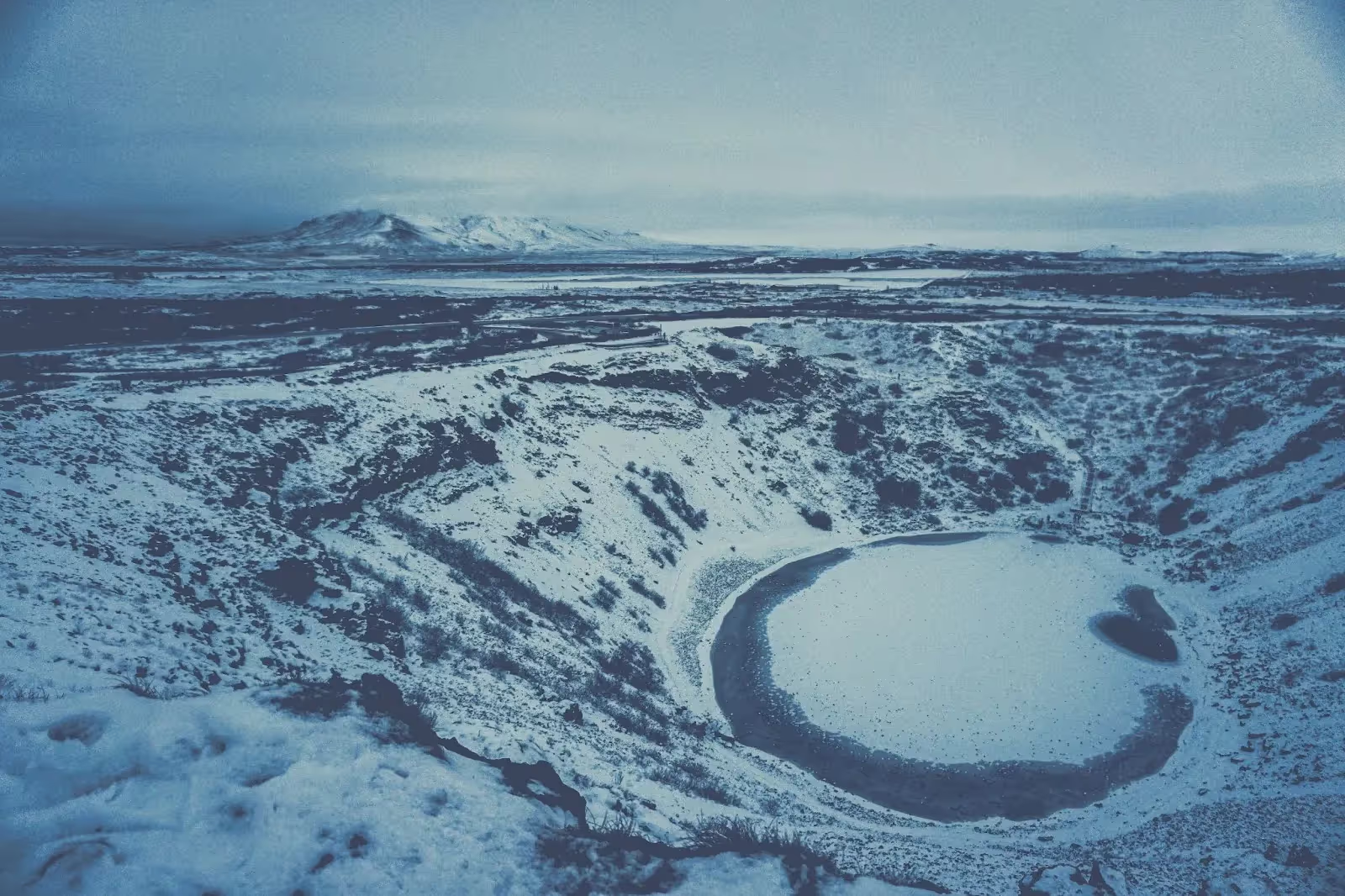
Kerid is a beautiful attraction that is best visited during the warmer season to fully appreciate the natural colors from the rock, fauna, and pool. In winter, the many crater lakes and pool freeze over and the hike down to the crater and lake can be dangerous due to icy and slippery conditions, particularly on windy days. However, if you still want to visit during the winter, the crater is still captivating.
INTERESTING PLACES NEAR KERIÐ
If you're doing a self-drive Golden Circle tour, chances are high that you'll visit Kerid because it's conveniently located on the way to the geyser. Additionally, we have a guided Golden Circle tour that includes a stop at Kerid crater and a visit to Hvammsvik Hot Springs. Typically, tourists spend about half an hour to an hour at the crater, taking pictures and exploring the crater's edge.
In Iceland's Western Volcanic Zone, you can find numerous other crater lakes. The surrounding region is characterized by barren, stark lava fields along with the Reykjanes peninsula and the Langjokull ice cap.
- Geysir Hot Springs
- Thingvellir National Park
- Gullfoss Waterfall
- Faxi Waterfall
- Flúðir Village
- Friðheimar Tomato Farm
- The Secret Lagoon
- Efsti-Dalur Dairy Farm
- Skálholt Churches
- Sólheimar Eco Village
- Bobby Fischer Center
- Paradisarhellir Cave
- Laugaskarð Swimming Pool
- Lake Laugarvatn
- Reykholt
Is There Any Entrance Fee Or Parking Fee At Kerid Crater?
There is a small entrance fee to enter the crater, but there is no fee for parking your car there.
Visiting the crater requires payment of ISK 400 (Approx. $2.8) per person. However, children under the age of 12 can enter for free.
A fee is required because the path is located on private property and it is the landowner's responsibility to maintain it. The collected fee is used for preserving and maintaining the path, providing visitors with relevant information during their journey, and protecting the environment surrounding the area.
Kerid Crater Opening Hours
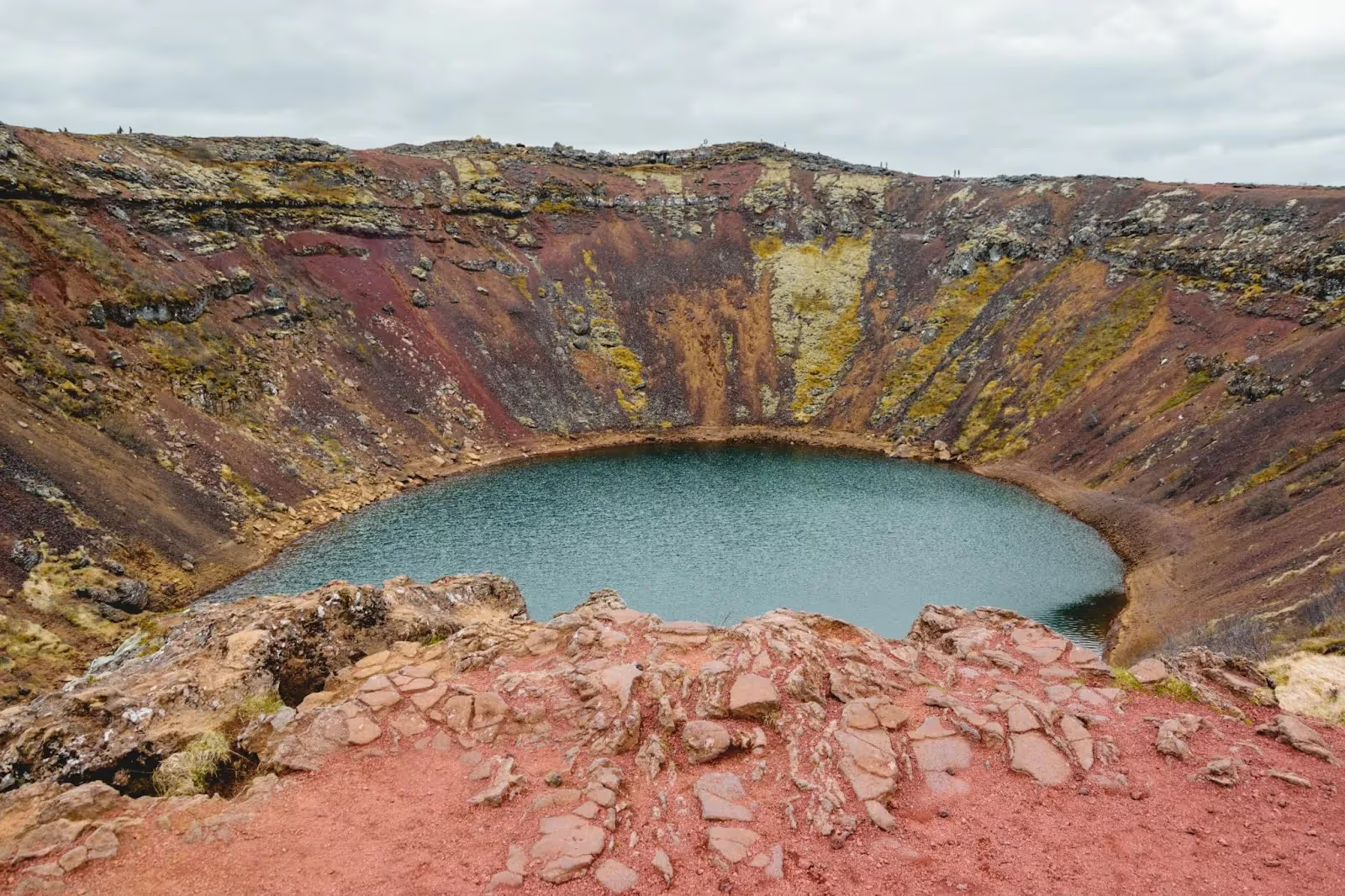
Crater opening hours are:
- June to August: 8:30 AM to 9:30 PM
- May to September: Only Daylight Hours
Best Season For Visiting Kerid Crater
It is highly recommended to visit Kerid during the warm season, natural hot spring, particularly during the Summer months. This is when the natural beauty of Kerid is at its best, with vibrant rock formations and lush greenery surrounding the pool area.

Although it is a beautiful view during winter, getting to the crater can be dangerous due to icy conditions. The slippery surfaces make it a hazardous walk down. Even though it looks picturesque covered in snow, the risk is not worth it. If you visit during colder months, make sure to take extra caution.
Safety At Kerid
To stay safe while at the Kerid crater, it is crucial to take safety measures.
- The path leading to the crater can be slippery and steep, particularly in damp or frosty weather.
- It is recommended that you wear sturdy and non-slip shoes while descending into the crater.
- Additionally, refrain from walking on ice if you visit during winter.
- Please keep in mind that Kerið crater does not have a designated lookout area. The edges of the crater may be unstable and rocks could fall if stepped on. It is recommended to avoid walking around the rim and edges and not attempt to climb the walls of the crater.
- Swimming in Kerid's lake is not allowed because its water is extremely cold and can be dangerous.
To have a safe and enjoyable journey at Kerið, make sure to follow these safety tips! Kerið is such an explosion and incredible site.
Visit Kerid Crater With Golden Circle Day Tours
Consider visiting Kerið Crater with the assistance of Golden Circle Day Tours (GDCT), a reputable company that offers guided tours. Kerið Crater is highly recommended as a destination for your trip, and GDCT is known both locally and internationally for their tour services.
Begin your Icelandic adventure by checking out the collection of tours offered by GDCT. Book a reliable tour at an affordable rate.


